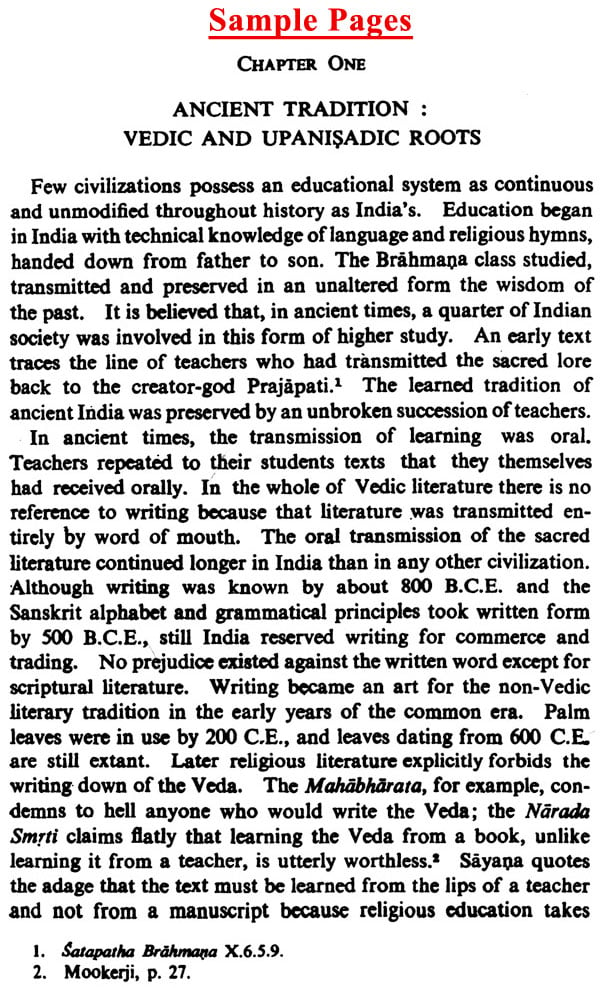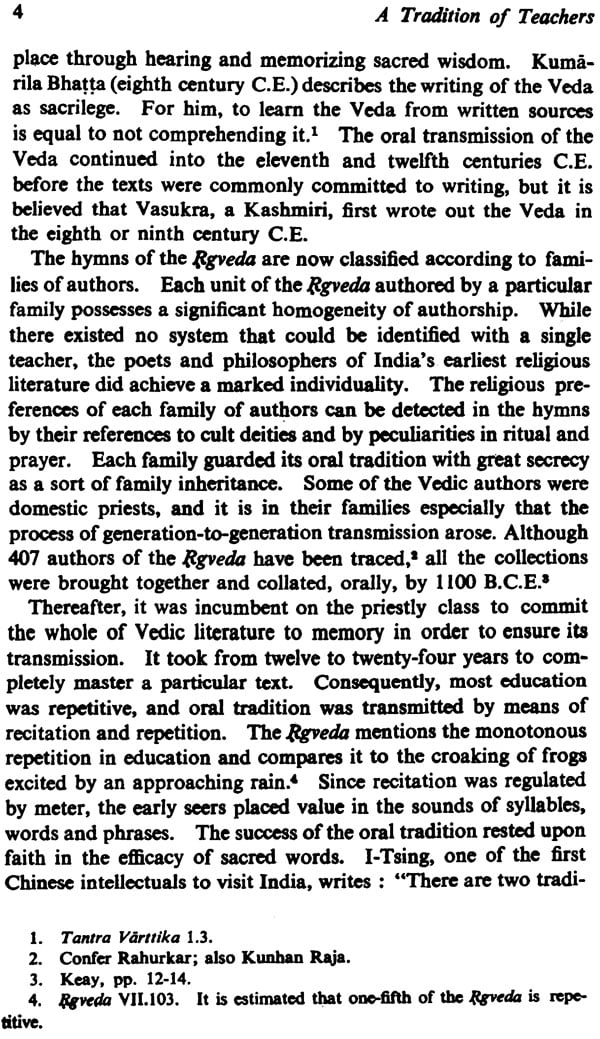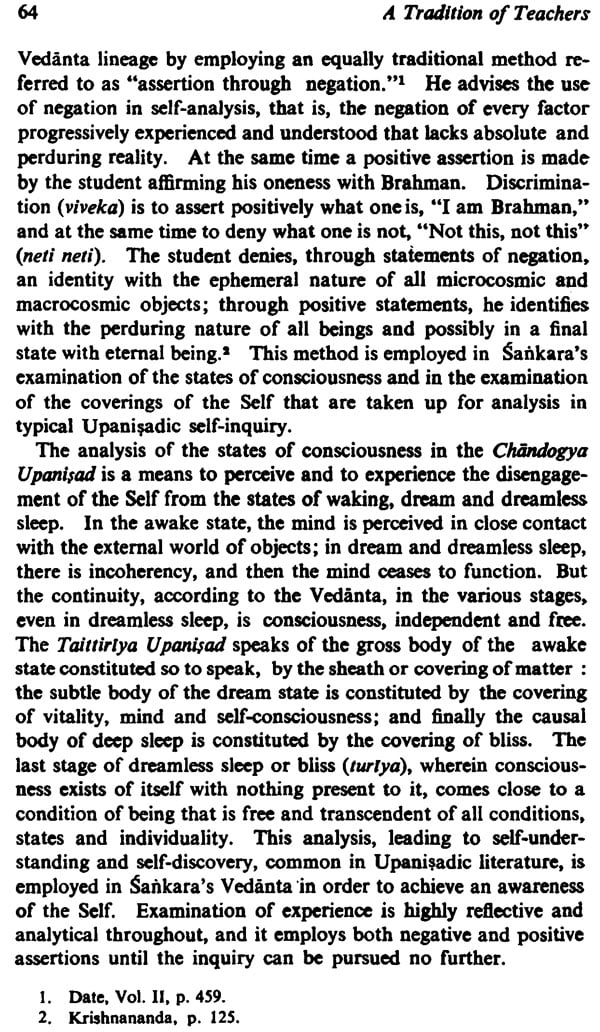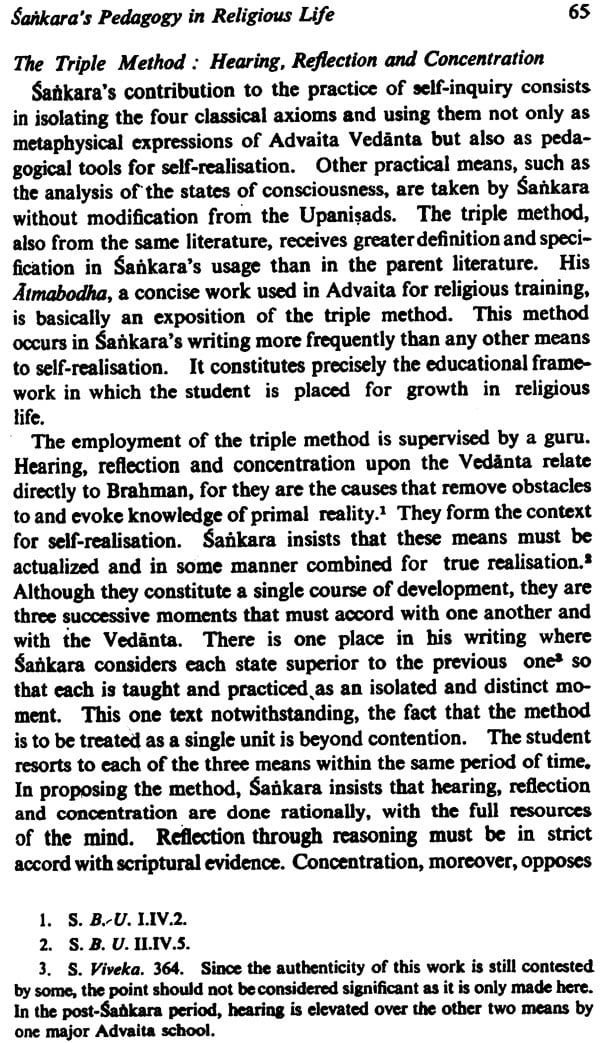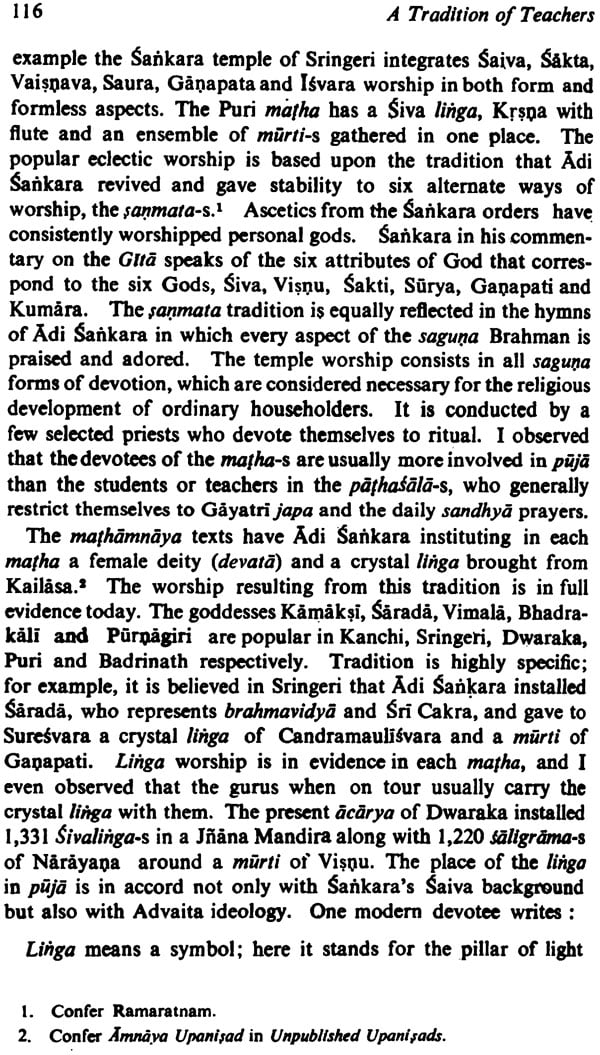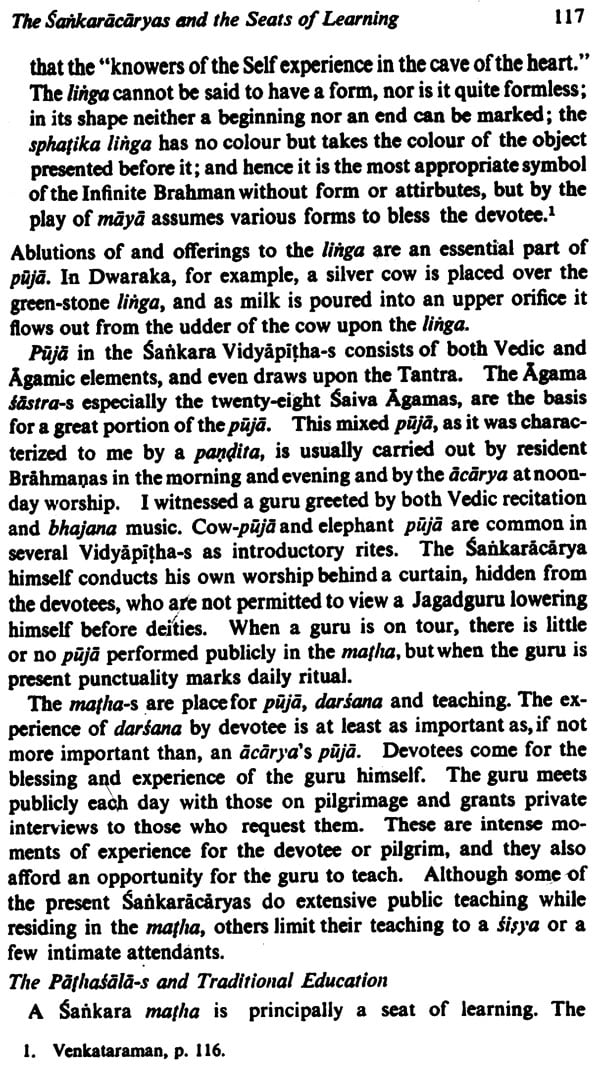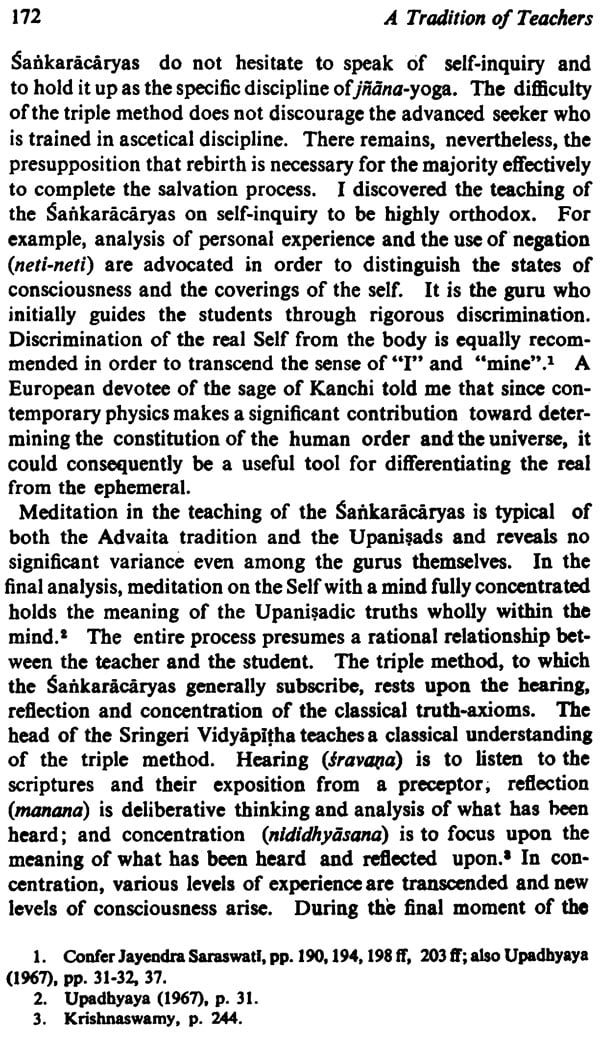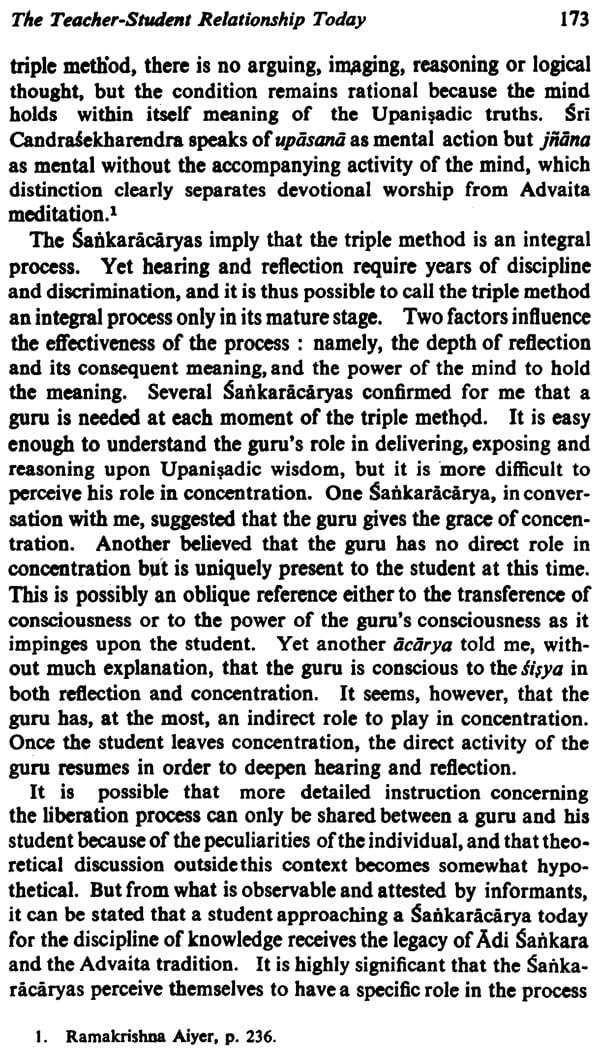
A Tradition of Teachers: Sankara (Shankaracharya) and the Jagadgurus Today
Book Specification
| Item Code: | IDE218 |
| Author: | William Cenkner |
| Publisher: | Motilal Banarsidass Publishers Pvt. Ltd. |
| Language: | English |
| Edition: | 2001 |
| ISBN: | 8120809327 |
| Pages: | 226 |
| Cover: | Hardcover |
| Other Details | 8.3" X 5.5" |
| Weight | 300 gm |
Book Description
From the Jacket:
The uniqueness of the Indian guru rests upon the uniqueness of the Indian teaching tradition. Before anything else, the Hindu saint and spiritual guide are teachers of tradition. An understanding of a religious figure in India can be achieved only within the framework of the teaching tradition from which that individual has come.
The study selects one way of understanding the guru in classical Hindu life in the belief that this articulation offers something normative for an understanding of guru in the wider Indian development and History. Sankara has been selected because he identified with the scriptural tradition of Upanishads and the early Vedanta system. Moreover, Sankara's conception of guru continued for 1200 years, even into our times.
The first part of this book is drawn from the texts that trace the role of guru and the guru-sisya relationship in the writing of Sankara. The second part of the book is an investigation of the five major acharyas of the Sankara tradition reigning during the last half of the twentieth century. Thus, the articulation of the guru in the writings of Sankara, in part one, is tested from the historical context among the Sankaracharyas of the recent past.
About the Author:
DR. WILLIAM CENKNER is the Katherine Drexel Professor of Religion at The Catholic University of America, Washington, D.C. He is the author of The Hindu Personality in Education: Tagore, Gandhi, and Aurobindo. He has also edited and authored, The Religious Quest; The Multicultural Church; and Evil and Response of world Religions. Having researched frequently in India, his teaching includes an Indian focus along with the religious traditions East Asia. His articles appear in various American, European and Asian Journals of religion and philosophy.
| NOTE TO 2001 EDITION | vii | |
| NOTE TO 1994 EDITION | ix | |
| INTRODUCTION | xi | |
| LIST OF ABBREVIATIONS | xvii | |
| PART ONE: THE TRADITION | ||
| ONE | ANCIENT TRADITION: VEDIC AND UPANISADIC | 3 |
| ROOTS | 3 | |
| The Teacher in the Upanisads | 8 | |
| The Guru-Sisya Relationship | 15 | |
| Pedagogy in the Upanishads | 19 | |
| TWO | SANKARA AND TEACHING TRADITION | 29 |
| The Nature of the Guru | 32 | |
| The Personality of the Religious seeker | 45 | |
| The Guru-Sisya Relationship | 55 | |
| THREE | SANKARA'S PEDAGOGY IN RELIGIOS LIFE | 60 |
| Self-Inquiry | 61 | |
| Triple-Method: Hearing, Reflection, Concentration | 65 | |
| The place of meditation | 71 | |
| Practice of meditation | 77 | |
| The Independence of Self-Realization | 80 | |
| FOUR | THE TEACHING HERITAGE AFTER SANKARA | 84 |
| The First Disciples of Sankara | 85 | |
| Works of the Late-Sankara | 90 | |
| Diversity within Advaita Vedanta | 96 | |
| The Threshold of the Present
| 03 | |
| PART TWO: PRESENT DAY SANKARACHARYAS | ||
| FIVE | THE SANKARACHAYAS AND THE SEATS OF LEARNING | 109 |
| The Vidyapithas Today | 112 | |
| The Pathasalas and Traditional Education | 117 | |
| The Present Sankaracharyas | 122 | |
| The Ministry of Sankaracharyas | 127 | |
| The Capacity of a Jagadguru
| 132 | |
| SIX | THE TEACHING OF THE SANKARACHARYAS | 135 |
| The Dharma Path | 136 | |
| Themes of special interest | 142 | |
| The Supreme teaching: Advaita Vedanta | 146 | |
| The Exaltation of Adi Sankara
| 152 | |
| SEVEN | THE TEACHER-STUDENT RELATIONSHIP TODAY | 154 |
| The Meaning of the Student Today | 161 | |
| The Experience of a Guru | 168 | |
| The Path of the Student | 170 | |
| EIGHT | THE GURU IN THE MODERN WORLD | 175 |
| Hymn to Sri Daksinamurti | 175 | |
| The Guru in the Historical Order | 177 | |
| The Guru in Modern Life | 181 | |
| BIBLIOGRAPHY | 189 | |
| GLOSSARY | 202 | |
| INDEX | 209 | |
